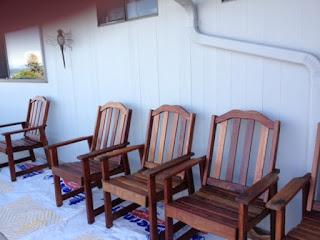Wood furniture crafted as dressers, shelves, beds tables or chairs, wood are made of a versatile and durable material. But after a while, such furniture inevitably develops wear and tear and lessens its appeal or their function. If you get the urge to throw this away, don’t. Wood furniture can be easily fixed. There are plenty of products on the market to fix scratches on wood. If you are in a hurry you might even use crayons, nuts or iodine to fix minor problems.
There many common ways of making repairs to wooden furniture, including
those to chairs, doors, drawers, caning and mirror frames. Different techniques
are needed for each type of fix. But it’s worth remembering that all wooden
furniture has one thing in common: joints. The joints then are a good place to
start in furniture repair.
All furniture is put together in a series of joints, and structural
problems often involve joint weakening or failure. Some joints are simple, some
complicated, some types stronger than the others. The joints used in good
wooden furniture are usually stronger than those in cheap pieces, but age and
abuse can take their toll even when the original construction was good. To
prevent more serious damage, all joints should be repaired as soon as possible
when they loosen or separate.
Take the broken part and a similar undamaged part to the mill work or
woodworking shop for duplication. Carefully clean the old adhesive from the joints.
Then reassemble the chair with the new part, gluing each joint. Clamp the chair
with strap clamps until the adhesive dries, and then refinish the chair
completely.
Outdoor chairs made with wooden slats can be repaired the same way, but the slats can usually be replaced with wide moldings or thin boards. To replace a broken slat, cut and shape a piece of wide molding or a board to fit the frame. If the slats are fastened with screws, drill screw holes in the new slat and attach it with the old screws or matching new ones. If they're fastened with rivets, drill the old rivets out and replace them with self-tapping or pan-head sheet metal screws.
If the wood furniture has parts made of leather, it is important to identify your furniture's leather type before doing the repair work. This is to determine if the leather is pigmented or Aniline. The repair procedure is directly related to the leather type.
Once you have determined what to use and avoid, rub olive oil, baby oil
or saddle oil into the scratch of the leather surface using a cotton swab
applicator. After applying it directly to the scratch, rub it into the
surrounding leather with a circular motion. Allow the oil to dry for an hour.
If the scratch has not repaired itself, repeat the step or move on to the next
one. As with all steps, test this in an inconspicuous area first as oil may
absorb into the leather causing it to stain or darken.
Then dampen a cotton cloth and place the slightly damp cloth onto the scratched area. Allow the moisture to soak into the scratch slightly. Note than this particular process work only on some aniline leather types, such as pull-up and possibly bi-cast. Press a warm iron against the damp cloth. The heat and the moisture may bring out the natural oil in the leather. If it does, the scratch may heal itself as a result. Hold the iron on for 10 seconds. Remove it, and look at the scratch. If it seems to have disappeared, dry off the leather and prepare to use as normal. If the scratch is still there, repeat the step with the iron once more.


No comments:
Post a Comment